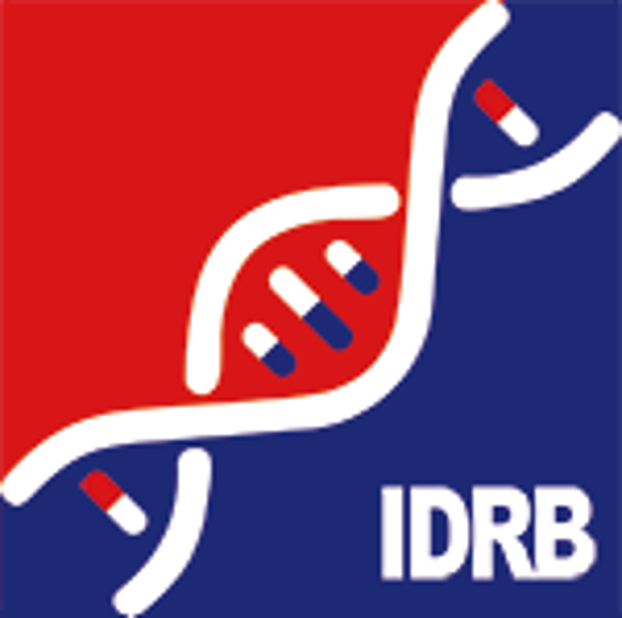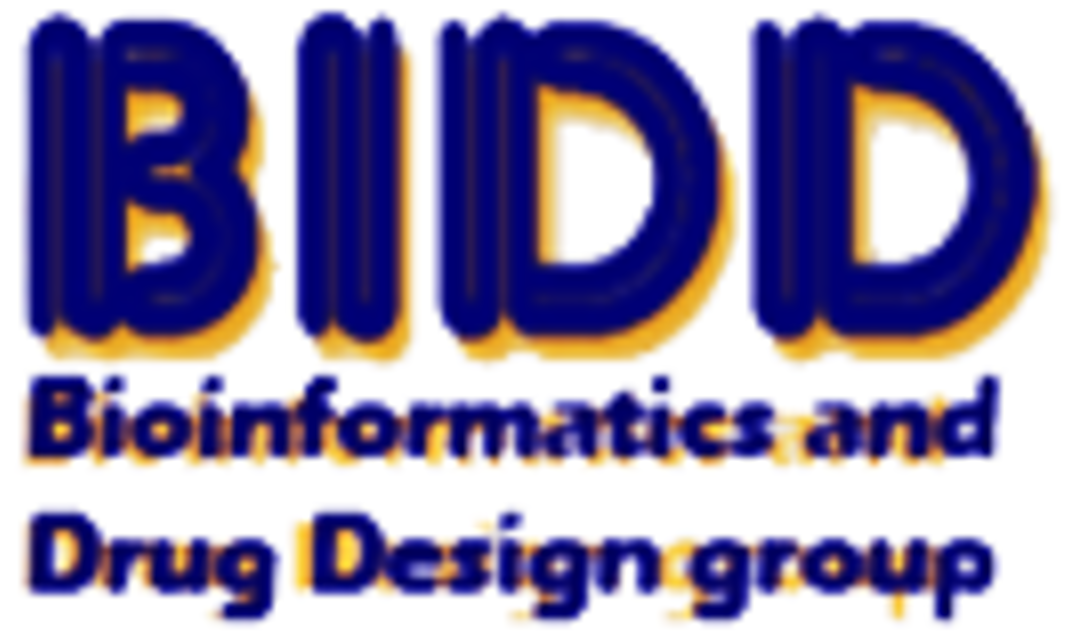Target Information
| Target General Information | Top | |||||
|---|---|---|---|---|---|---|
| Target ID |
T27137
(Former ID: TTDC00220)
|
|||||
| Target Name |
Metabotropic glutamate receptor 1 (mGluR1)
|
|||||
| Synonyms |
mGLUR1; Glutamate receptor mGLU1; GPRC1A
Click to Show/Hide
|
|||||
| Gene Name |
GRM1
|
|||||
| Target Type |
Discontinued target
|
[1] | ||||
| Disease | [+] 6 Target-related Diseases | + | ||||
| 1 | Alzheimer disease [ICD-11: 8A20] | |||||
| 2 | Schizophrenia [ICD-11: 6A20] | |||||
| 3 | General pain disorder [ICD-11: 8E43] | |||||
| 4 | Cerebral ischaemia [ICD-11: 8B1Z] | |||||
| 5 | Pain [ICD-11: MG30-MG3Z] | |||||
| 6 | Dissociative neurological symptom disorder [ICD-11: 6B60] | |||||
| Function |
Ligand binding causes a conformation change that triggers signaling via guanine nucleotide-binding proteins (G proteins) and modulates the activity of down-stream effectors. Signaling activates a phosphatidylinositol-calcium second messenger system. May participate in the central action of glutamate in the CNS, such as long-term potentiation in the hippocampus and long-term depression in the cerebellum. G-protein coupled receptor for glutamate.
Click to Show/Hide
|
|||||
| BioChemical Class |
GPCR glutamate
|
|||||
| UniProt ID | ||||||
| Sequence |
MVGLLLFFFPAIFLEVSLLPRSPGRKVLLAGASSQRSVARMDGDVIIGALFSVHHQPPAE
KVPERKCGEIREQYGIQRVEAMFHTLDKINADPVLLPNITLGSEIRDSCWHSSVALEQSI EFIRDSLISIRDEKDGINRCLPDGQSLPPGRTKKPIAGVIGPGSSSVAIQVQNLLQLFDI PQIAYSATSIDLSDKTLYKYFLRVVPSDTLQARAMLDIVKRYNWTYVSAVHTEGNYGESG MDAFKELAAQEGLCIAHSDKIYSNAGEKSFDRLLRKLRERLPKARVVVCFCEGMTVRGLL SAMRRLGVVGEFSLIGSDGWADRDEVIEGYEVEANGGITIKLQSPEVRSFDDYFLKLRLD TNTRNPWFPEFWQHRFQCRLPGHLLENPNFKRICTGNESLEENYVQDSKMGFVINAIYAM AHGLQNMHHALCPGHVGLCDAMKPIDGSKLLDFLIKSSFIGVSGEEVWFDEKGDAPGRYD IMNLQYTEANRYDYVHVGTWHEGVLNIDDYKIQMNKSGVVRSVCSEPCLKGQIKVIRKGE VSCCWICTACKENEYVQDEFTCKACDLGWWPNADLTGCEPIPVRYLEWSNIESIIAIAFS CLGILVTLFVTLIFVLYRDTPVVKSSSRELCYIILAGIFLGYVCPFTLIAKPTTTSCYLQ RLLVGLSSAMCYSALVTKTNRIARILAGSKKKICTRKPRFMSAWAQVIIASILISVQLTL VVTLIIMEPPMPILSYPSIKEVYLICNTSNLGVVAPLGYNGLLIMSCTYYAFKTRNVPAN FNEAKYIAFTMYTTCIIWLAFVPIYFGSNYKIITTCFAVSLSVTVALGCMFTPKMYIIIA KPERNVRSAFTTSDVVRMHVGDGKLPCRSNTFLNIFRRKKAGAGNANSNGKSVSWSEPGG GQVPKGQHMWHRLSVHVKTNETACNQTAVIKPLTKSYQGSGKSLTFSDTSTKTLYNVEEE EDAQPIRFSPPGSPSMVVHRRVPSAATTPPLPSHLTAEETPLFLAEPALPKGLPPPLQQQ QQPPPQQKSLMDQLQGVVSNFSTAIPDFHAVLAGPGGPGNGLRSLYPPPPPPQHLQMLPL QLSTFGEELVSPPADDDDDSERFKLLQEYVYEHEREGNTEEDELEEEEEDLQAASKLTPD DSPALTPPSPFRDSVASGSSVPSSPVSESVLCTPPNVSYASVILRDYKQSSSTL Click to Show/Hide
|
|||||
| 3D Structure | Click to Show 3D Structure of This Target | AlphaFold | ||||
| HIT2.0 ID | T02U6A | |||||
| Drugs and Modes of Action | Top | |||||
|---|---|---|---|---|---|---|
| Discontinued Drug(s) | [+] 4 Discontinued Drugs | + | ||||
| 1 | PF-1913539 | Drug Info | Discontinued in Phase 3 | Alzheimer disease | [2] | |
| 2 | AZD8529 | Drug Info | Discontinued in Phase 2 | Schizophrenia | [3], [4] | |
| 3 | AZD-9272 | Drug Info | Discontinued in Phase 1 | Neuropathic pain | [5], [6] | |
| 4 | LY-367385 | Drug Info | Terminated | Neurological disorder | [11], [12] | |
| Preclinical Drug(s) | [+] 2 Preclinical Drugs | + | ||||
| 1 | A-841720 | Drug Info | Preclinical | Pain | [7], [8] | |
| 2 | NPS-2390 | Drug Info | Preclinical | Cerebrovascular ischaemia | [9], [10] | |
| Mode of Action | [+] 5 Modes of Action | + | ||||
| Antagonist | [+] 9 Antagonist drugs | + | ||||
| 1 | PF-1913539 | Drug Info | [13], [14] | |||
| 2 | A-841720 | Drug Info | [1] | |||
| 3 | (+)-MCPG | Drug Info | [18], [19] | |||
| 4 | (S)-(+)-CBPG | Drug Info | [22] | |||
| 5 | (S)-4C3HPG | Drug Info | [20] | |||
| 6 | (S)-4CPG | Drug Info | [18] | |||
| 7 | (S)-TBPG | Drug Info | [23] | |||
| 8 | 3-MATIDA | Drug Info | [26] | |||
| 9 | AIDA | Drug Info | [18] | |||
| Agonist | [+] 8 Agonist drugs | + | ||||
| 1 | AZD8529 | Drug Info | [15] | |||
| 2 | LY-367385 | Drug Info | [17] | |||
| 3 | (1S,3R)-ACPD | Drug Info | [20] | |||
| 4 | (S)-3HPG | Drug Info | [20] | |||
| 5 | 3,5-DHPG | Drug Info | [18] | |||
| 6 | ibotenate | Drug Info | [20] | |||
| 7 | L-CCG-I | Drug Info | [20] | |||
| 8 | [3H]quisqualate | Drug Info | [57], [58] | |||
| Modulator | [+] 2 Modulator drugs | + | ||||
| 1 | AZD-9272 | Drug Info | [6] | |||
| 2 | LY-3390334 | Drug Info | [36] | |||
| Inhibitor | [+] 20 Inhibitor drugs | + | ||||
| 1 | NPS-2390 | Drug Info | [16] | |||
| 2 | (3,4-dimethylphenyl)(4-phenoxyphenyl)methanone | Drug Info | [21] | |||
| 3 | (E)-1-Adamantan-1-yl-3-quinolin-3-yl-propenone | Drug Info | [21] | |||
| 4 | (E)-4,4-Dimethyl-1-quinolin-3-yl-pent-1-en-3-one | Drug Info | [21] | |||
| 5 | 2-methyl-6-(phenylethynyl)pyridine | Drug Info | [24] | |||
| 6 | 4-(cyclohexyloxy)quinazoline | Drug Info | [27] | |||
| 7 | 6-bromo-N-(3-chlorophenyl)quinazolin-4-amine | Drug Info | [28] | |||
| 8 | N-(2,3-dihydro-1H-inden-2-yl)isoquinolin-1-amine | Drug Info | [27] | |||
| 9 | N-(2,3-dihydro-1H-inden-2-yl)quinazolin-4-amine | Drug Info | [27] | |||
| 10 | N-(2-methyl-2-phenylpropyl)pyrazine-2-carboxamide | Drug Info | [39] | |||
| 11 | N-(2-phenylpropyl)quinoxaline-2-carboxamide | Drug Info | [39] | |||
| 12 | N-(3-bromophenyl)-6-chloroquinazolin-4-amine | Drug Info | [28] | |||
| 13 | N-(3-bromophenyl)-6-fluoroquinazolin-4-amine | Drug Info | [28] | |||
| 14 | N-cyclohexylquinazolin-4-amine | Drug Info | [27] | |||
| 15 | N-cyclohexylquinolin-4-amine | Drug Info | [27] | |||
| 16 | N-phenethylquinoxaline-2-carboxamide | Drug Info | [39] | |||
| 17 | Pyrazine-2-carboxylic acid adamantan-1-ylamide | Drug Info | [16] | |||
| 18 | Quinoline-2-carboxylic acid adamantan-1-ylamide | Drug Info | [16] | |||
| 19 | Quinoline-3-carboxylic acid adamantan-1-ylamide | Drug Info | [16] | |||
| 20 | VU0080241 | Drug Info | [50] | |||
| Modulator (allosteric modulator) | [+] 51 Modulator (allosteric modulator) drugs | + | ||||
| 1 | 3,5-dimethyl PPP | Drug Info | [25] | |||
| 2 | A-794278 | Drug Info | [29] | |||
| 3 | A-794282 | Drug Info | [29] | |||
| 4 | A-850002 | Drug Info | [29] | |||
| 5 | BAY 367620 | Drug Info | [30] | |||
| 6 | CFMMC | Drug Info | [31] | |||
| 7 | CFMTI | Drug Info | [32] | |||
| 8 | CPCCOEt | Drug Info | [18] | |||
| 9 | DM-PPP | Drug Info | [25] | |||
| 10 | FPTQ | Drug Info | [33] | |||
| 11 | FTIDC | Drug Info | [34] | |||
| 12 | JNJ-16567083 | Drug Info | [35] | |||
| 13 | LY456066 | Drug Info | [31] | |||
| 14 | LY456236 | Drug Info | [37] | |||
| 15 | MK-5435 | Drug Info | [38] | |||
| 16 | PHCCC | Drug Info | [37] | |||
| 17 | PMID12470711C3 | Drug Info | [25] | |||
| 18 | PMID16099654C3a | Drug Info | [40] | |||
| 19 | PMID16099654C4b | Drug Info | [40] | |||
| 20 | PMID17064898C29 | Drug Info | [39] | |||
| 21 | PMID17276684C22 | Drug Info | [41] | |||
| 22 | PMID17532216C2f | Drug Info | [42] | |||
| 23 | PMID17929793C11c | Drug Info | [43] | |||
| 24 | PMID17929793C23c | Drug Info | [43] | |||
| 25 | PMID17929793C23e | Drug Info | [43] | |||
| 26 | PMID17929793C23h | Drug Info | [43] | |||
| 27 | PMID17929793C23i | Drug Info | [43] | |||
| 28 | PMID19289283C22 | Drug Info | [27] | |||
| 29 | PMID19289283C32 | Drug Info | [27] | |||
| 30 | PMID19433355C11q | Drug Info | [44] | |||
| 31 | PMID19433355C11s | Drug Info | [44] | |||
| 32 | PMID20346665C24 | Drug Info | [45] | |||
| 33 | PMID20346665C27 | Drug Info | [45] | |||
| 34 | PMID22266036C12e | Drug Info | [46] | |||
| 35 | PMID22266036C9a | Drug Info | [46] | |||
| 36 | PMID23084894C10i | Drug Info | [47] | |||
| 37 | PMID23084894C9n | Drug Info | [47] | |||
| 38 | R214127 | Drug Info | [18] | |||
| 39 | Ro01-6128 | Drug Info | [48] | |||
| 40 | Ro0711401 | Drug Info | [49] | |||
| 41 | Ro67-4853 | Drug Info | [48] | |||
| 42 | Ro67-7476 | Drug Info | [48] | |||
| 43 | VU-71 | Drug Info | [40] | |||
| 44 | VU0469650 | Drug Info | [51] | |||
| 45 | YM-202074 | Drug Info | [52] | |||
| 46 | YM298198 | Drug Info | [53] | |||
| 47 | [11C]MMTP | Drug Info | [54] | |||
| 48 | [18F]FITM | Drug Info | [55] | |||
| 49 | [18F]FPIT | Drug Info | [56] | |||
| 50 | [18F]MK-1312 | Drug Info | [38] | |||
| 51 | [3H]EM-TBPC | Drug Info | [57] | |||
| Cell-based Target Expression Variations | Top | |||||
|---|---|---|---|---|---|---|
| Cell-based Target Expression Variations | ||||||
| Drug Binding Sites of Target | Top | |||||
|---|---|---|---|---|---|---|
| Ligand Name: [3H]LY341495 | Ligand Info | |||||
| Structure Description | Metabotropic glutamate receptor mGluR1 complexed with LY341495 antagonist | PDB:3KS9 | ||||
| Method | X-ray diffraction | Resolution | 1.90 Å | Mutation | Yes | [59] |
| PDB Sequence |
QRSVARMDGD
44 VIIGALFSVH54 HQPPAEKVPE64 RKCGEIREQY74 GIQRVEAMFH84 TLDKINADPV 94 LLPNITLGSE104 IRDSCWHSSV114 ALEQSIEFIR124 DSLKPIAGVI160 GPGSSSVAIQ 170 VQNLLQLFDI180 PQIAYSATSI190 DLSDKTLYKY200 FLRVVPSDTL210 QARAMLDIVK 220 RYNWTYVSAV230 HTEGNYGESG240 MDAFKELAAQ250 EGLSIAHSDK260 IYSNAGEKSF 270 DRLLRKLRER280 LPKARVVVCF290 CEGMTVRGLL300 SAMRRLGVVG310 EFSLIGSDGW 320 ADRDEVIEGY330 EVEANGGITI340 KLQSPEVRSF350 DDYFLKLRLD360 TNTRNPWFPE 370 FWQHRFQCRL380 PGPNFKRICT395 GNESLEENYV405 QDSKMGFVIN415 AIYAMAHGLQ 425 NMHHALCPGH435 VGLCDAMKPI445 DGSKLLDFLI455 KSSFIGVSGE465 EVWFDEKGDA 475 PGRYDIMNLQ485 YTERYDYVHV497 GTWHEGVLNI507 DDYKI
|
|||||
|
|
||||||
| Ligand Name: CID 6971145 | Ligand Info | |||||
| Structure Description | intermediate state of class C GPCR | PDB:7DGE | ||||
| Method | Electron microscopy | Resolution | 3.65 Å | Mutation | Yes | [60] |
| PDB Sequence |
QRSVARMDGD
44 VIIGALFSVH54 HQPPAEKVPE64 RKCGEIREQY74 GIQRVEAMFH84 TLDKINADPV 94 LLPNITLGSE104 IRDSCWHSSV114 ALEQSIEFIR124 DSLIGRTKKP155 IAGVIGPGSS 165 SVAIQVQNLL175 QLFDIPQIAY185 SATSIDLSDK195 TLYKYFLRVV205 PSDTLQARAM 215 LDIVKRYNWT225 YVSAVHTEGN235 YGESGMDAFK245 ELAAQEGLCI255 AHSDKIYSNA 265 GEKSFDRLLR275 KLRERLPKAR285 VVVCFCEGMT295 VRGLLSAMRR305 LGVVGEFSLI 315 GSDGWADRDE325 VIEGYEVEAN335 GGITIKLQSP345 EVRSFDDYFL355 KLRLDTNHRN 365 PWFQEFWQHR375 FQCRLEGFPQ385 ENSNFKRICT395 GNESLEENYV405 QDSKMGFVIN 415 AIYAMAHGLQ425 NMHHALCPGH435 VGLCDAMKPI445 DGSKLLDFLI455 KSSFIGVSGE 465 EVWFDEKGDA475 PGRYDIMNLQ485 YTEANRYDYV495 HVGTWHEGVL505 NIDDYKIQMN 515 KSGVVRSVCS525 EPCLKGQIKV535 IRKGEVSCCW545 ICTACKENEY555 VQDEFTCKAC 565 DLGWWPNADL575 TGCEPIPVRY585 LEWSNIESII595 AIAFSCLGIL605 VTLFVTLIFV 615 LYRDTPVVKS625 SSRELCYIIL635 AGIFLGYVCP645 FTLIAKPTTT655 SCYLQRLLVG 665 LSSAMCYSAL675 VTKTNRIARI685 LAGSKKKICT695 RKPRFMSAWA705 QVIIASILIS 715 VQLTLVVTLI725 IMEPPMPILS735 YPSIKEVYLI745 CNTSNLGVVA755 PLGYNGLLIM 765 SCTYYAFKTR775 NVPANFNEAK785 YIAFTMYTTC795 IIWLAFVPIY805 FGSNYKIITT 815 CFAVSLSVTV825 ALGCMFTPKM835 YIII
|
|||||
|
|
||||||
| Click to View More Binding Site Information of This Target with Different Ligands | ||||||
| Different Human System Profiles of Target | Top |
|---|---|
|
Human Similarity Proteins
of target is determined by comparing the sequence similarity of all human proteins with the target based on BLAST. The similarity proteins for a target are defined as the proteins with E-value < 0.005 and outside the protein families of the target.
A target that has fewer human similarity proteins outside its family is commonly regarded to possess a greater capacity to avoid undesired interactions and thus increase the possibility of finding successful drugs
(Brief Bioinform, 21: 649-662, 2020).
Human Tissue Distribution
of target is determined from a proteomics study that quantified more than 12,000 genes across 32 normal human tissues. Tissue Specificity (TS) score was used to define the enrichment of target across tissues.
The distribution of targets among different tissues or organs need to be taken into consideration when assessing the target druggability, as it is generally accepted that the wider the target distribution, the greater the concern over potential adverse effects
(Nat Rev Drug Discov, 20: 64-81, 2021).
Human Pathway Affiliation
of target is determined by the life-essential pathways provided on KEGG database. The target-affiliated pathways were defined based on the following two criteria (a) the pathways of the studied target should be life-essential for both healthy individuals and patients, and (b) the studied target should occupy an upstream position in the pathways and therefore had the ability to regulate biological function.
Targets involved in a fewer pathways have greater likelihood to be successfully developed, while those associated with more human pathways increase the chance of undesirable interferences with other human processes
(Pharmacol Rev, 58: 259-279, 2006).
Biological Network Descriptors
of target is determined based on a human protein-protein interactions (PPI) network consisting of 9,309 proteins and 52,713 PPIs, which were with a high confidence score of ≥ 0.95 collected from STRING database.
The network properties of targets based on protein-protein interactions (PPIs) have been widely adopted for the assessment of target’s druggability. Proteins with high node degree tend to have a high impact on network function through multiple interactions, while proteins with high betweenness centrality are regarded to be central for communication in interaction networks and regulate the flow of signaling information
(Front Pharmacol, 9, 1245, 2018;
Curr Opin Struct Biol. 44:134-142, 2017).
Human Similarity Proteins
Human Tissue Distribution
Human Pathway Affiliation
Biological Network Descriptors
|
|
|
There is no similarity protein (E value < 0.005) for this target
|
|
Note:
If a protein has TS (tissue specficity) scores at least in one tissue >= 2.5, this protein is called tissue-enriched (including tissue-enriched-but-not-specific and tissue-specific). In the plots, the vertical lines are at thresholds 2.5 and 4.
|
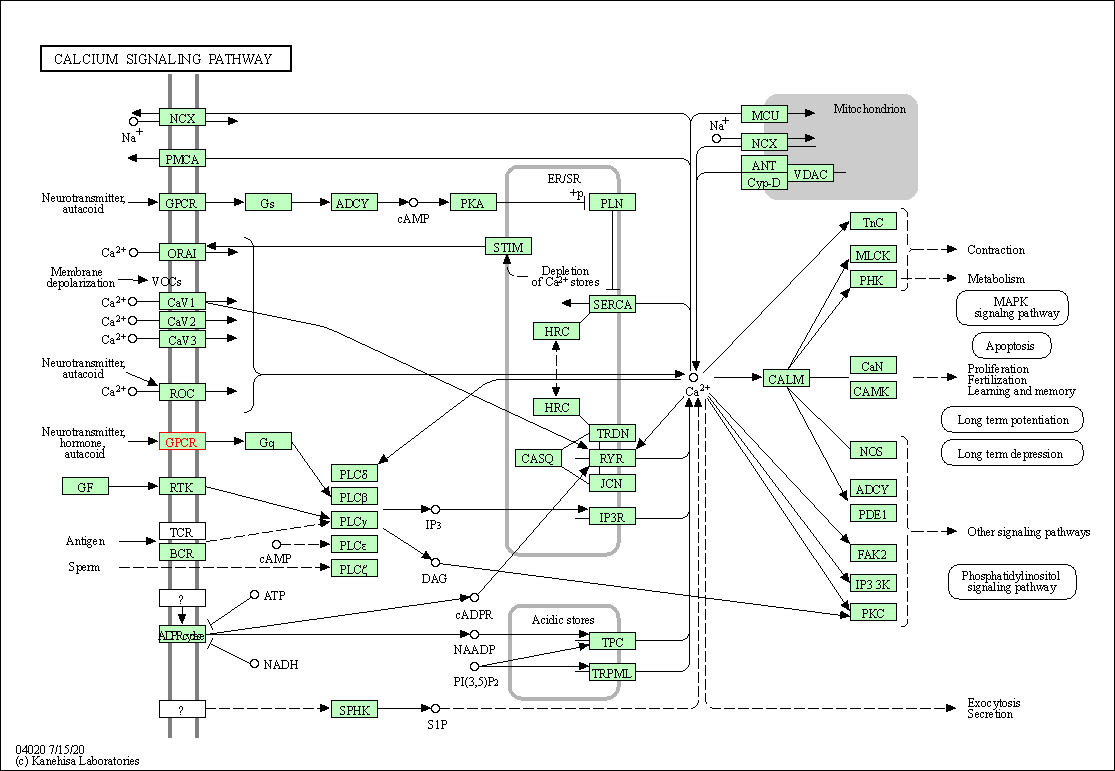
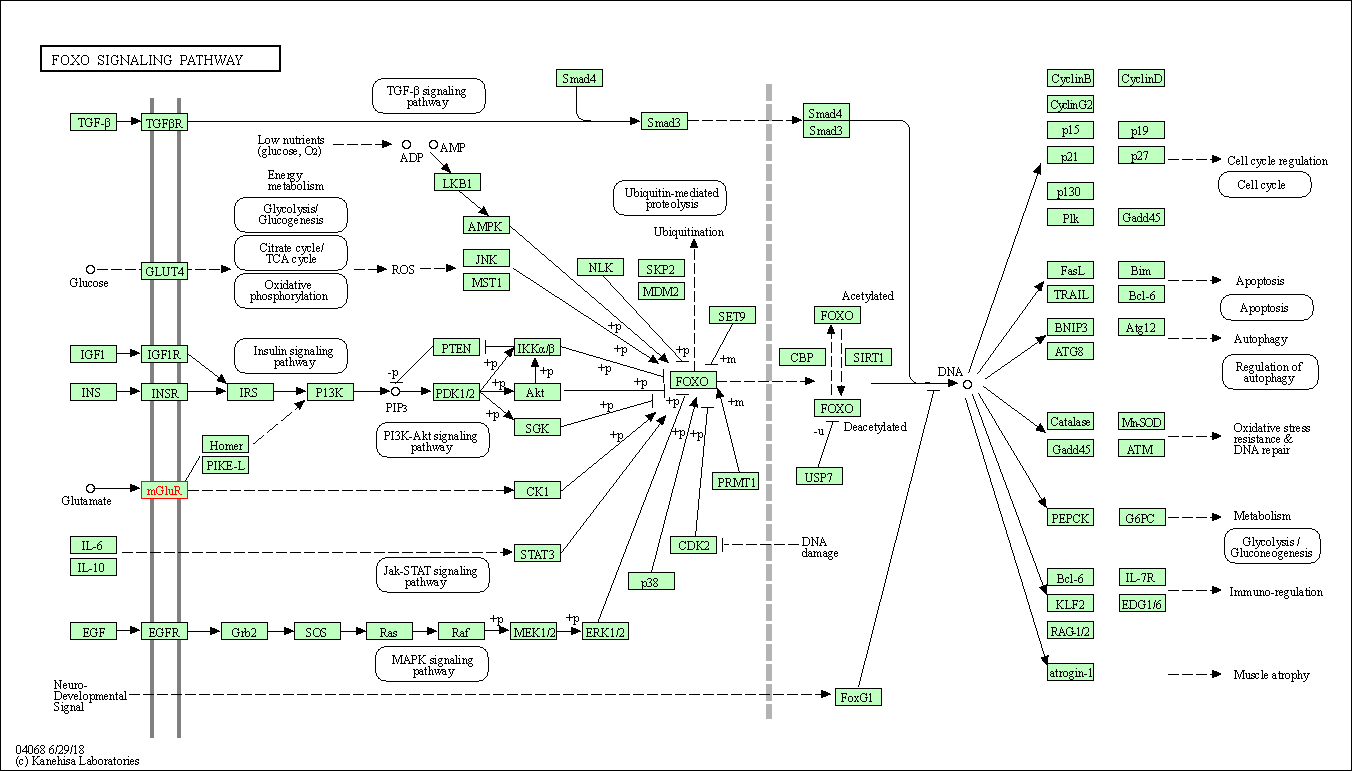
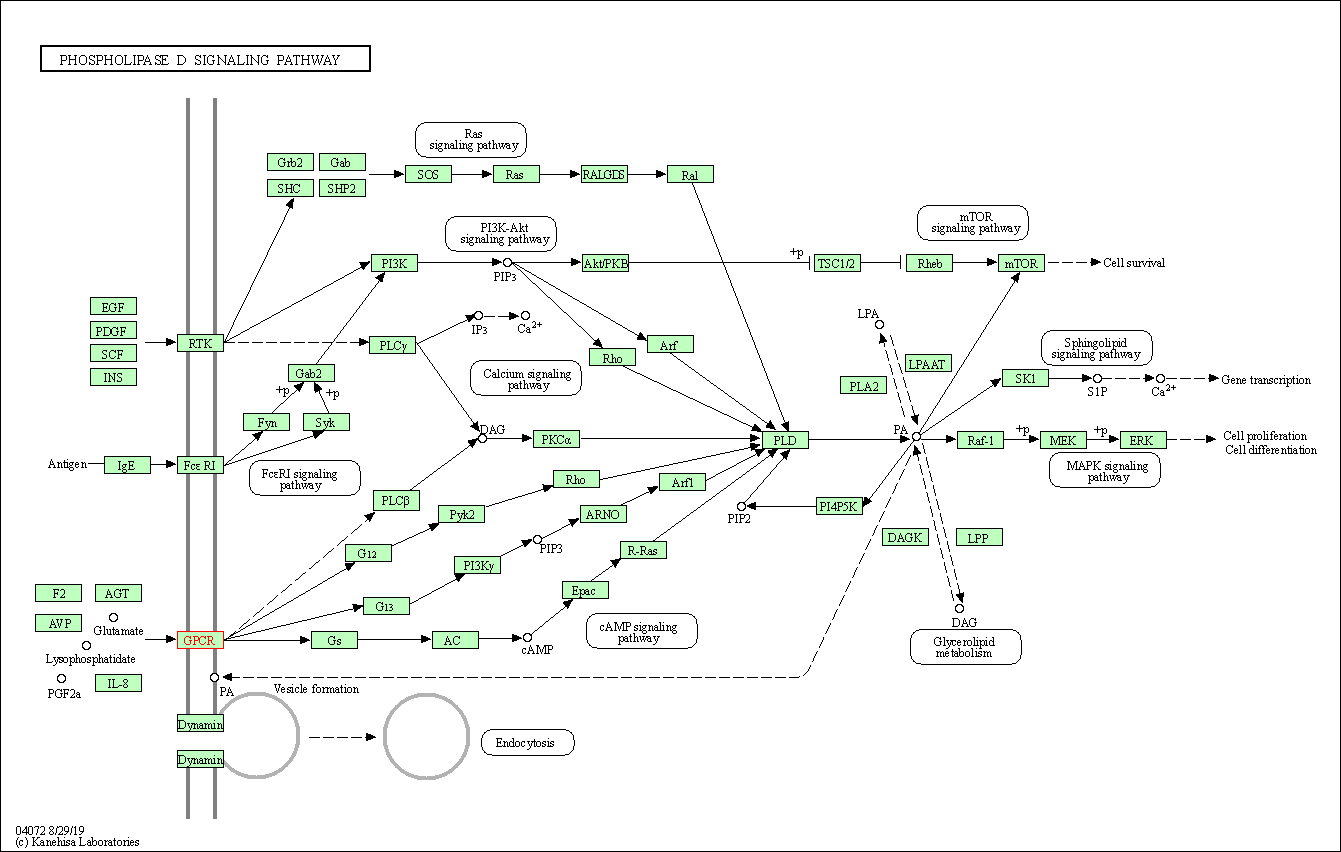
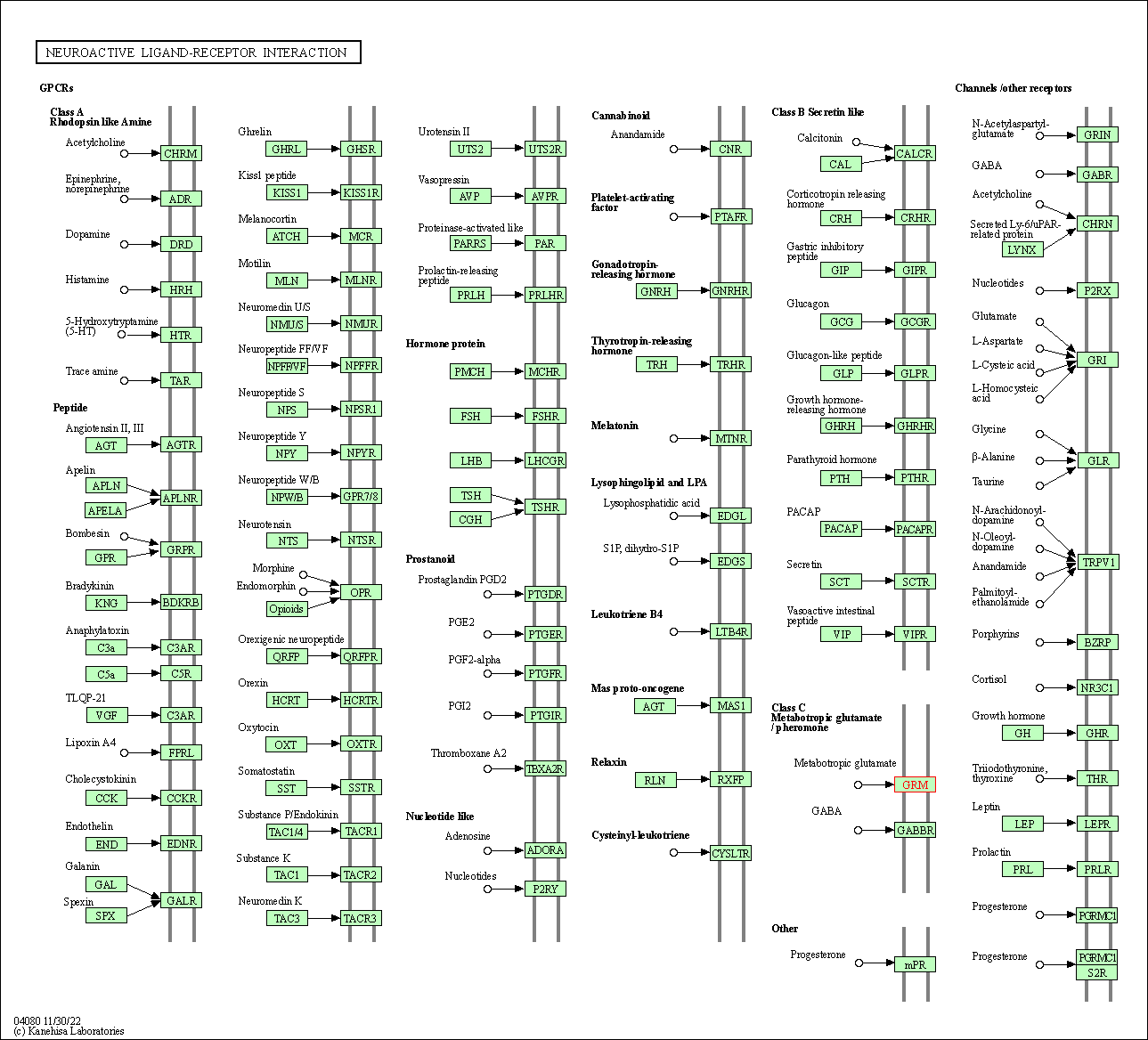
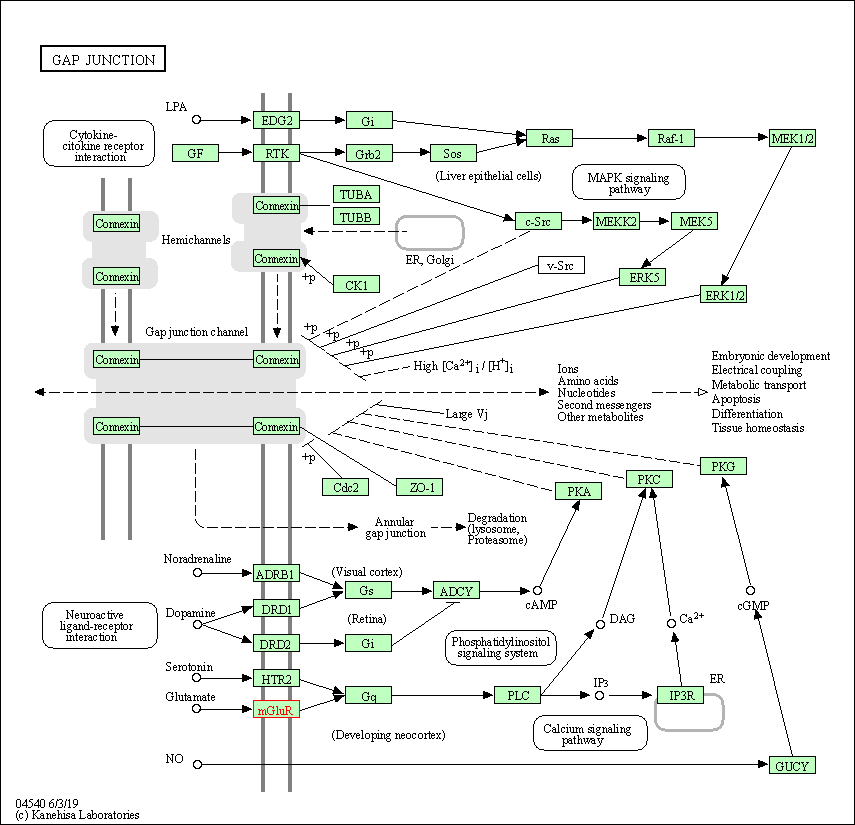


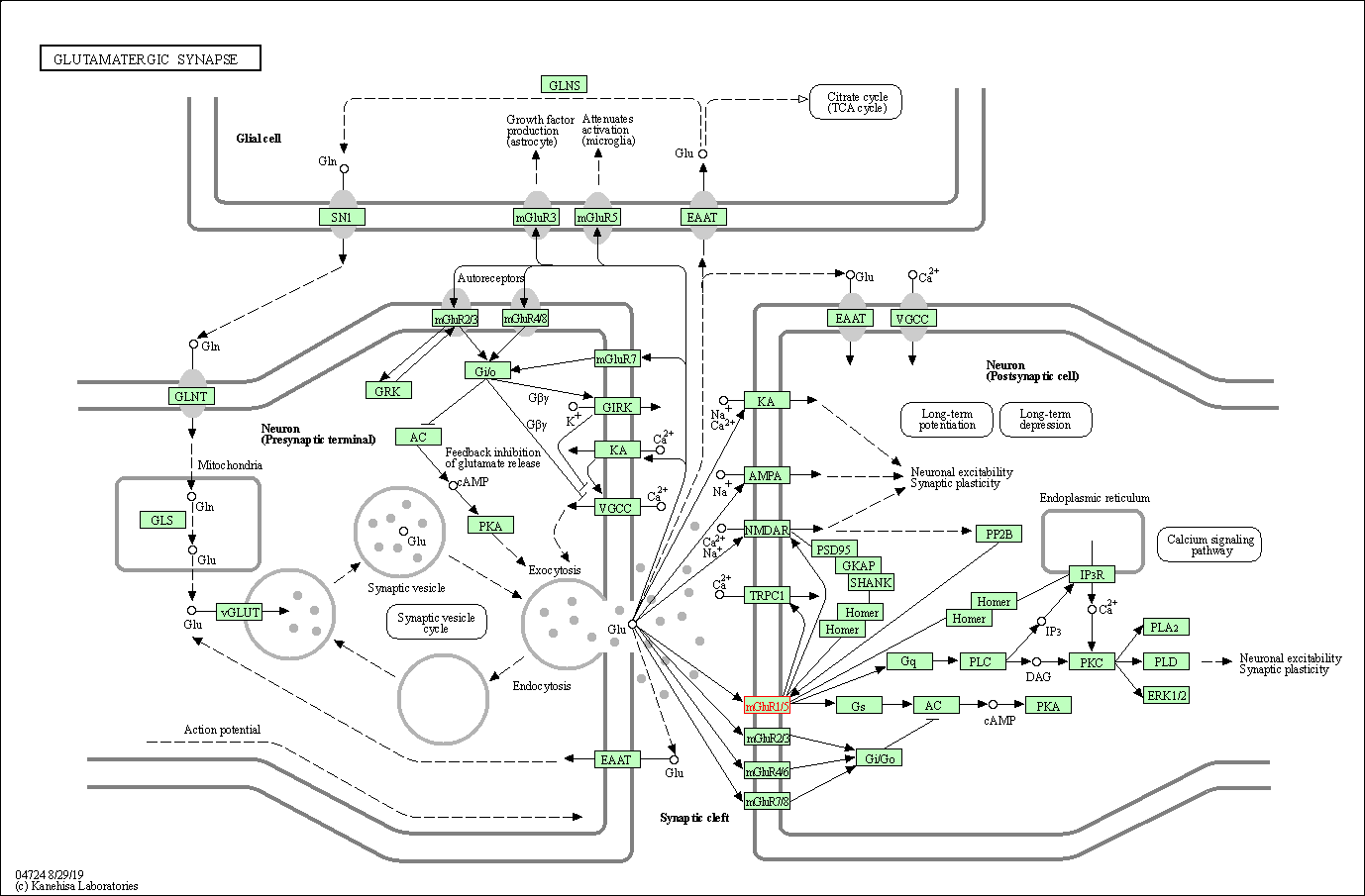
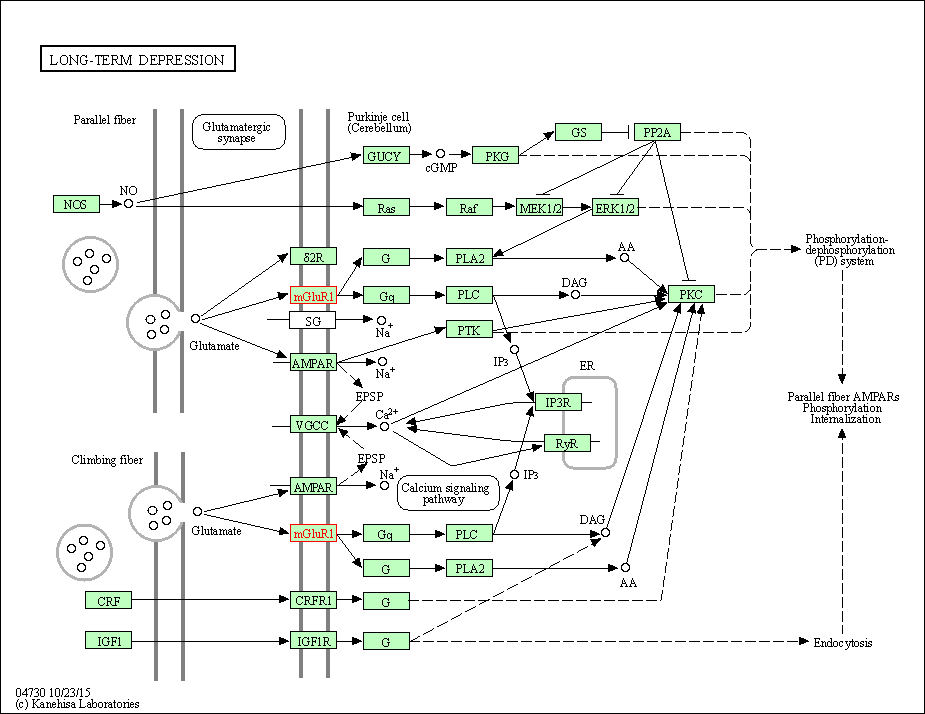
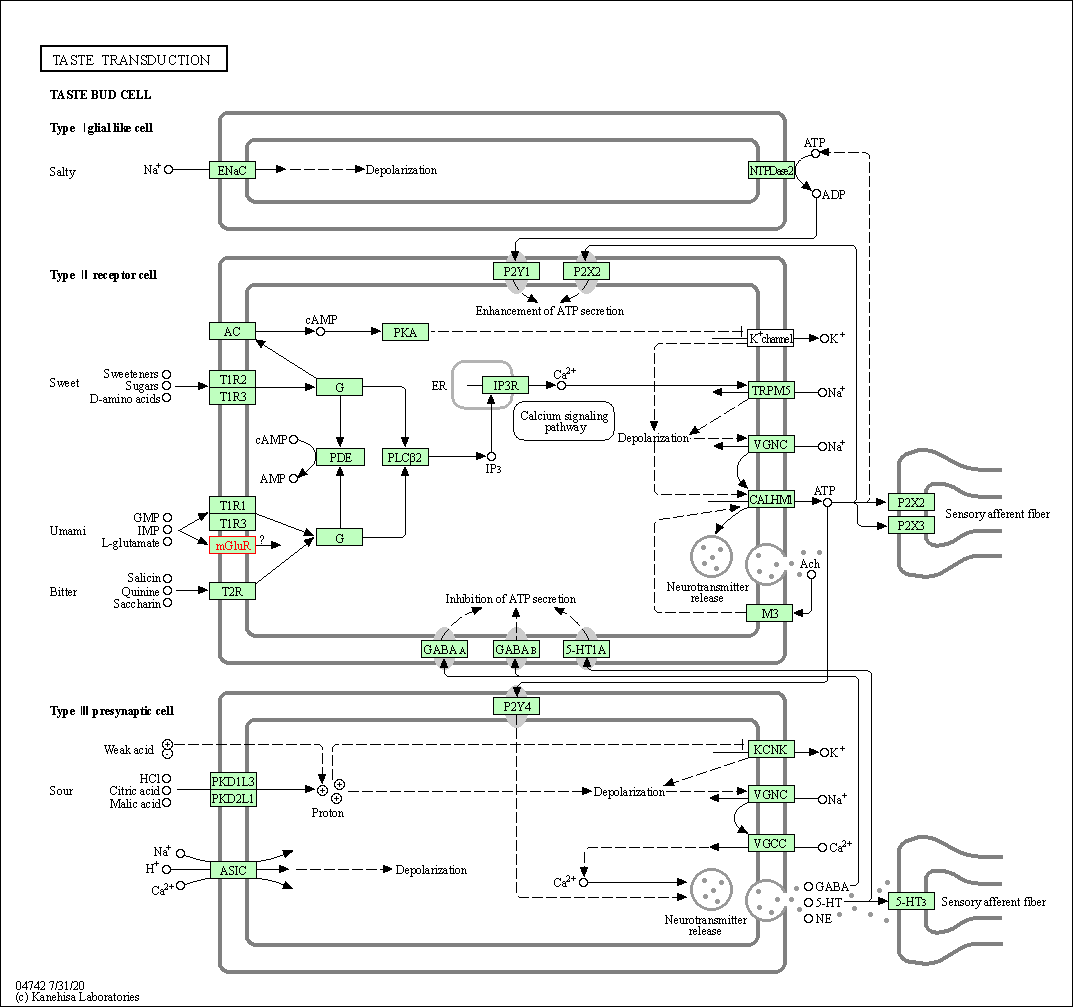
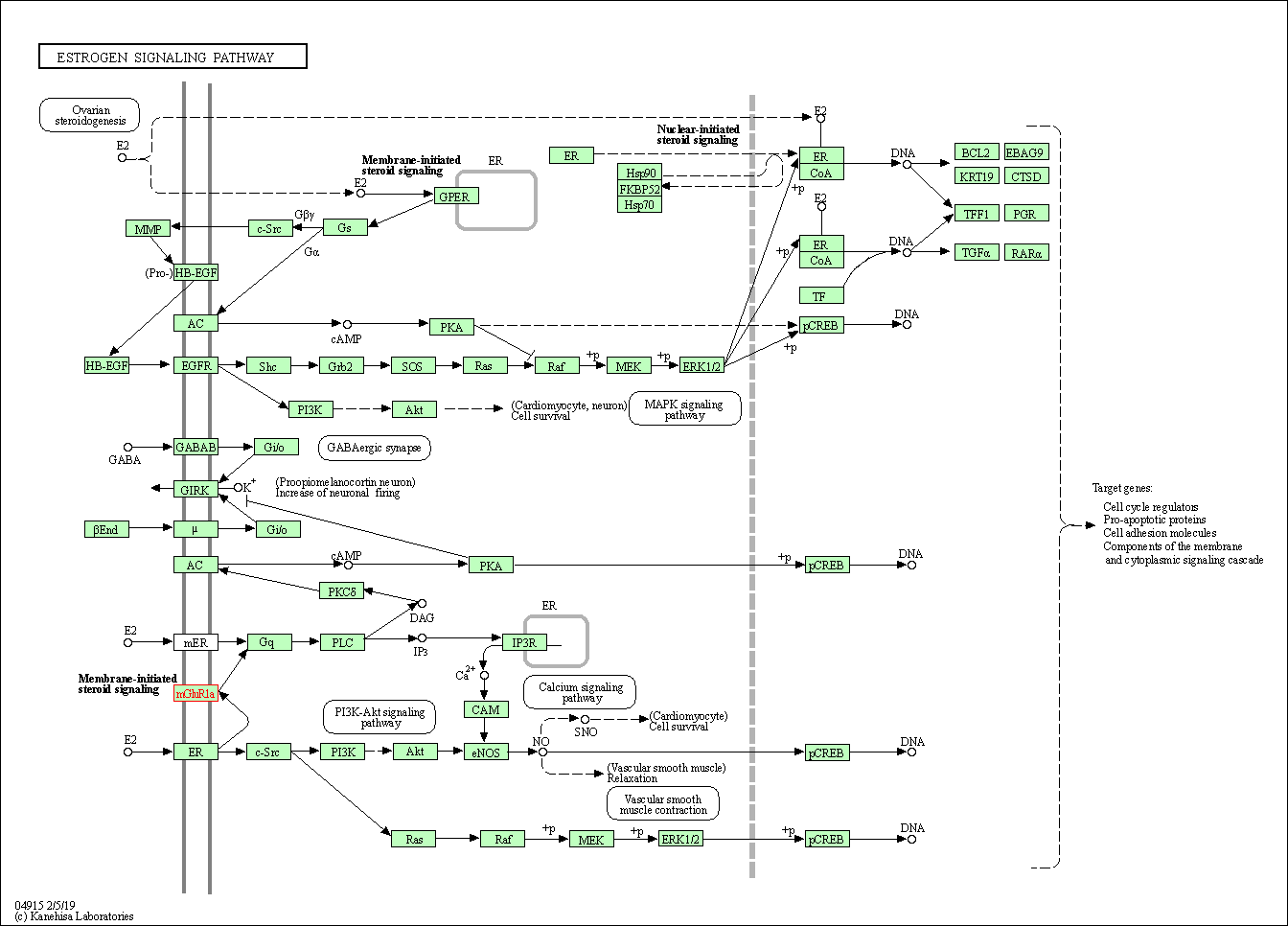
| KEGG Pathway | Pathway ID | Affiliated Target | Pathway Map |
|---|---|---|---|
| Calcium signaling pathway | hsa04020 | Affiliated Target |

|
| Class: Environmental Information Processing => Signal transduction | Pathway Hierarchy | ||
| FoxO signaling pathway | hsa04068 | Affiliated Target |

|
| Class: Environmental Information Processing => Signal transduction | Pathway Hierarchy | ||
| Phospholipase D signaling pathway | hsa04072 | Affiliated Target |

|
| Class: Environmental Information Processing => Signal transduction | Pathway Hierarchy | ||
| Neuroactive ligand-receptor interaction | hsa04080 | Affiliated Target |

|
| Class: Environmental Information Processing => Signaling molecules and interaction | Pathway Hierarchy | ||
| Gap junction | hsa04540 | Affiliated Target |

|
| Class: Cellular Processes => Cellular community - eukaryotes | Pathway Hierarchy | ||
| Long-term potentiation | hsa04720 | Affiliated Target |

|
| Class: Organismal Systems => Nervous system | Pathway Hierarchy | ||
| Retrograde endocannabinoid signaling | hsa04723 | Affiliated Target |

|
| Class: Organismal Systems => Nervous system | Pathway Hierarchy | ||
| Glutamatergic synapse | hsa04724 | Affiliated Target |

|
| Class: Organismal Systems => Nervous system | Pathway Hierarchy | ||
| Long-term depression | hsa04730 | Affiliated Target |

|
| Class: Organismal Systems => Nervous system | Pathway Hierarchy | ||
| Taste transduction | hsa04742 | Affiliated Target |

|
| Class: Organismal Systems => Sensory system | Pathway Hierarchy | ||
| Estrogen signaling pathway | hsa04915 | Affiliated Target |

|
| Class: Organismal Systems => Endocrine system | Pathway Hierarchy | ||
| Click to Show/Hide the Information of Affiliated Human Pathways | |||
| Degree | 8 | Degree centrality | 8.59E-04 | Betweenness centrality | 4.25E-04 |
|---|---|---|---|---|---|
| Closeness centrality | 2.23E-01 | Radiality | 1.39E+01 | Clustering coefficient | 2.50E-01 |
| Neighborhood connectivity | 2.29E+01 | Topological coefficient | 1.38E-01 | Eccentricity | 12 |
| Download | Click to Download the Full PPI Network of This Target | ||||
| Chemical Structure based Activity Landscape of Target | Top |
|---|---|
| Drug Property Profile of Target | Top | |
|---|---|---|
| (1) Molecular Weight (mw) based Drug Clustering | (2) Octanol/Water Partition Coefficient (xlogp) based Drug Clustering | |
|
|
||
| (3) Hydrogen Bond Donor Count (hbonddonor) based Drug Clustering | (4) Hydrogen Bond Acceptor Count (hbondacc) based Drug Clustering | |
|
|
||
| (5) Rotatable Bond Count (rotbonds) based Drug Clustering | (6) Topological Polar Surface Area (polararea) based Drug Clustering | |
|
|
||
| "RO5" indicates the cutoff set by lipinski's rule of five; "D123AB" colored in GREEN denotes the no violation of any cutoff in lipinski's rule of five; "D123AB" colored in PURPLE refers to the violation of only one cutoff in lipinski's rule of five; "D123AB" colored in BLACK represents the violation of more than one cutoffs in lipinski's rule of five | ||
| Target Poor or Non Binders | Top | |||||
|---|---|---|---|---|---|---|
| Target Poor or Non Binders | ||||||
| Target Regulators | Top | |||||
|---|---|---|---|---|---|---|
| Target-interacting Proteins | ||||||
| Target Profiles in Patients | Top | |||||
|---|---|---|---|---|---|---|
| Target Expression Profile (TEP) |
||||||
| Target Affiliated Biological Pathways | Top | |||||
|---|---|---|---|---|---|---|
| KEGG Pathway | [+] 9 KEGG Pathways | + | ||||
| 1 | Calcium signaling pathway | |||||
| 2 | FoxO signaling pathway | |||||
| 3 | Neuroactive ligand-receptor interaction | |||||
| 4 | Gap junction | |||||
| 5 | Long-term potentiation | |||||
| 6 | Retrograde endocannabinoid signaling | |||||
| 7 | Glutamatergic synapse | |||||
| 8 | Long-term depression | |||||
| 9 | Estrogen signaling pathway | |||||
| Panther Pathway | [+] 4 Panther Pathways | + | ||||
| 1 | Heterotrimeric G-protein signaling pathway-Gq alpha and Go alpha mediated pathway | |||||
| 2 | Metabotropic glutamate receptor group III pathway | |||||
| 3 | Metabotropic glutamate receptor group I pathway | |||||
| 4 | Endogenous cannabinoid signaling | |||||
| Reactome | [+] 2 Reactome Pathways | + | ||||
| 1 | G alpha (q) signalling events | |||||
| 2 | Class C/3 (Metabotropic glutamate/pheromone receptors) | |||||
| WikiPathways | [+] 6 WikiPathways | + | ||||
| 1 | Hypothetical Network for Drug Addiction | |||||
| 2 | GPCRs, Class C Metabotropic glutamate, pheromone | |||||
| 3 | Gastrin-CREB signalling pathway via PKC and MAPK | |||||
| 4 | GPCR ligand binding | |||||
| 5 | GPCR downstream signaling | |||||
| 6 | GPCRs, Other | |||||
| Target-Related Models and Studies | Top | |||||
|---|---|---|---|---|---|---|
| Target Validation | ||||||
| References | Top | |||||
|---|---|---|---|---|---|---|
| REF 1 | Comparison of the mGluR1 antagonist A-841720 in rat models of pain and cognition. Behav Pharmacol. 2007 Jul;18(4):273-81. | |||||
| REF 2 | Trusted, scientifically sound profiles of drug programs, clinical trials, safety reports, and company deals, written by scientists. Springer. 2015. Adis Insight (drug id 800021875) | |||||
| REF 3 | URL: http://www.guidetopharmacology.org Nucleic Acids Res. 2015 Oct 12. pii: gkv1037. The IUPHAR/BPS Guide to PHARMACOLOGY in 2016: towards curated quantitative interactions between 1300 protein targets and 6000 ligands. (Ligand id: 7678). | |||||
| REF 4 | Trusted, scientifically sound profiles of drug programs, clinical trials, safety reports, and company deals, written by scientists. Springer. 2015. Adis Insight (drug id 800029661) | |||||
| REF 5 | URL: http://www.guidetopharmacology.org Nucleic Acids Res. 2015 Oct 12. pii: gkv1037. The IUPHAR/BPS Guide to PHARMACOLOGY in 2016: towards curated quantitative interactions between 1300 protein targets and 6000 ligands. (Ligand id: 6439). | |||||
| REF 6 | Emerging drugs in neuropathic pain. Expert Opin Emerg Drugs. 2007 Mar;12(1):113-26. | |||||
| REF 7 | URL: http://www.guidetopharmacology.org Nucleic Acids Res. 2015 Oct 12. pii: gkv1037. The IUPHAR/BPS Guide to PHARMACOLOGY in 2016: towards curated quantitative interactions between 1300 protein targets and 6000 ligands. (Ligand id: 3953). | |||||
| REF 8 | Trusted, scientifically sound profiles of drug programs, clinical trials, safety reports, and company deals, written by scientists. Springer. 2015. Adis Insight (drug id 800024545) | |||||
| REF 9 | URL: http://www.guidetopharmacology.org Nucleic Acids Res. 2015 Oct 12. pii: gkv1037. The IUPHAR/BPS Guide to PHARMACOLOGY in 2016: towards curated quantitative interactions between 1300 protein targets and 6000 ligands. (Ligand id: 1384). | |||||
| REF 10 | Trusted, scientifically sound profiles of drug programs, clinical trials, safety reports, and company deals, written by scientists. Springer. 2015. Adis Insight (drug id 800014988) | |||||
| REF 11 | URL: http://www.guidetopharmacology.org Nucleic Acids Res. 2015 Oct 12. pii: gkv1037. The IUPHAR/BPS Guide to PHARMACOLOGY in 2016: towards curated quantitative interactions between 1300 protein targets and 6000 ligands. (Ligand id: 1379). | |||||
| REF 12 | Trusted, scientifically sound profiles of drug programs, clinical trials, safety reports, and company deals, written by scientists. Springer. 2015. Adis Insight (drug id 800011092) | |||||
| REF 13 | Pfizer. Product Development Pipeline. March 31 2009. | |||||
| REF 14 | Comparative study of action mechanisms of dimebon and memantine on AMPA- and NMDA-subtypes glutamate receptors in rat cerebral neurons. Bull Exp Biol Med. 2003 Nov;136(5):474-7. | |||||
| REF 15 | Clinical pipeline report, company report or official report of AstraZeneca (2009). | |||||
| REF 16 | Positive and negative modulation of group I metabotropic glutamate receptors. J Med Chem. 2008 Feb 14;51(3):634-47. | |||||
| REF 17 | Anticonvulsant actions of LY 367385 ((+)-2-methyl-4-carboxyphenylglycine) and AIDA ((RS)-1-aminoindan-1,5-dicarboxylic acid). Eur J Pharmacol. 1999 Feb 26;368(1):17-24. | |||||
| REF 18 | [3H]R214127: a novel high-affinity radioligand for the mGlu1 receptor reveals a common binding site shared by multiple allosteric antagonists. Mol Pharmacol. 2003 May;63(5):1082-93. | |||||
| REF 19 | How many drug targets are there Nat Rev Drug Discov. 2006 Dec;5(12):993-6. | |||||
| REF 20 | Characterization of [(3)H]Quisqualate binding to recombinant rat metabotropic glutamate 1a and 5a receptors and to rat and human brain sections. J Neurochem. 2000 Dec;75(6):2590-601. | |||||
| REF 21 | Synergism of virtual screening and medicinal chemistry: identification and optimization of allosteric antagonists of metabotropic glutamate recepto... Bioorg Med Chem. 2009 Aug 1;17(15):5708-15. | |||||
| REF 22 | Biochemical and electrophysiological studies on (S)-(+)-2-(3'-carboxybicyclo(1.1.1)pentyl)-glycine (CBPG), a novel mGlu5 receptor agonist endowed with mGlu1 receptor antagonist activity. Neuropharmacology. 1999 Jul;38(7):917-26. | |||||
| REF 23 | Synthesis and biological evaluation of 2-(3'-(1H-tetrazol-5-yl) bicyclo[1.1.1]pent-1-yl)glycine (S-TBPG), a novel mGlu1 receptor antagonist. Bioorg Med Chem. 2001 Feb;9(2):221-7. | |||||
| REF 24 | Carbamoyloximes as novel non-competitive mGlu5 receptor antagonists. Bioorg Med Chem Lett. 2010 Aug 1;20(15):4371-5. | |||||
| REF 25 | Synthesis and pharmacological characterisation of 2,4-dicarboxy-pyrroles as selective non-competitive mGluR1 antagonists. Bioorg Med Chem. 2003 Jan 17;11(2):171-83. | |||||
| REF 26 | The novel and systemically active metabotropic glutamate 1 (mGlu1) receptor antagonist 3-MATIDA reduces post-ischemic neuronal death. Neuropharmacology. 2002 May;42(6):741-51. | |||||
| REF 27 | In vitro and in vivo SAR of pyrido[3,4-d]pyramid-4-ylamine based mGluR1 antagonists. Bioorg Med Chem Lett. 2009 Apr 15;19(8):2190-4. | |||||
| REF 28 | Discovery and SAR of 6-substituted-4-anilinoquinazolines as non-competitive antagonists of mGlu5. Bioorg Med Chem Lett. 2009 Dec 1;19(23):6623-6. | |||||
| REF 29 | Structure-activity relationship of triazafluorenone derivatives as potent and selective mGluR1 antagonists. J Med Chem. 2005 Nov 17;48(23):7374-88. | |||||
| REF 30 | BAY36-7620: a potent non-competitive mGlu1 receptor antagonist with inverse agonist activity. Mol Pharmacol. 2001 May;59(5):965-73. | |||||
| REF 31 | Identification of a novel transmembrane domain involved in the negative modulation of mGluR1 using a newly discovered allosteric mGluR1 antagonist, 3-cyclohexyl-5-fluoro-6-methyl-7-(2-morpholin-4-ylethoxy)-4H-chromen-4-one. Neuropharmacology. 2009 Sep;57(4):438-45. | |||||
| REF 32 | Unique antipsychotic activities of the selective metabotropic glutamate receptor 1 allosteric antagonist 2-cyclopropyl-5-[1-(2-fluoro-3-pyridinyl)-5-methyl-1H-1,2,3-triazol-4-yl]-2,3-dihydro-1H-isoindol-1-one. J Pharmacol Exp Ther. 2009 Jul;330(1):179-90. | |||||
| REF 33 | Synthesis and evaluation of 6-[1-(2-[(18)F]fluoro-3-pyridyl)-5-methyl-1H-1,2,3-triazol-4-yl]quinoline for positron emission tomography imaging of the metabotropic glutamate receptor type 1 in brain. Bioorg Med Chem. 2011 Jan 1;19(1):102-10. | |||||
| REF 34 | Pharmacological characterization of a new, orally active and potent allosteric metabotropic glutamate receptor 1 antagonist, 4-[1-(2-fluoropyridin-... J Pharmacol Exp Ther. 2007 Jun;321(3):1144-53. | |||||
| REF 35 | A positron emission tomography radioligand for the in vivo labeling of metabotropic glutamate 1 receptor: (3-ethyl-2-[11C]methyl-6-quinolinyl)(cis- 4-methoxycyclohexyl)methanone. J Med Chem. 2005 Aug11;48(16):5096-9. | |||||
| REF 36 | Inhibition of group I metabotropic glutamate receptor responses in vivo in rats by a new generation of carboxyphenylglycine-like amino acid antagon... Neurosci Lett. 2002 Sep 20;330(2):127-30. | |||||
| REF 37 | URL: http://www.guidetopharmacology.org Nucleic Acids Res. 2015 Oct 12. pii: gkv1037. The IUPHAR/BPS Guide to PHARMACOLOGY in 2016: towards curated quantitative interactions between 1300 protein targets and 6000 ligands. (Target id: 289). | |||||
| REF 38 | Synthesis, characterization, and monkey PET studies of [ ]MK-1312, a PET tracer for quantification of mGluR1 receptor occupancy by MK-5435. Synapse. 2011 Feb;65(2):125-35. | |||||
| REF 39 | Structure-activity relationships of novel non-competitive mGluR1 antagonists: a potential treatment for chronic pain. Bioorg Med Chem Lett. 2007 Jan 15;17(2):486-90. | |||||
| REF 40 | 9H-Xanthene-9-carboxylic acid [1,2,4]oxadiazol-3-yl- and (2H-tetrazol-5-yl)-amides as potent, orally available mGlu1 receptor enhancers. Bioorg Med Chem Lett. 2005 Oct 15;15(20):4628-31. | |||||
| REF 41 | From pyrroles to 1-oxo-2,3,4,9-tetrahydro-1H-beta-carbolines: a new class of orally bioavailable mGluR1 antagonists. Bioorg Med Chem Lett. 2007 Apr 15;17(8):2254-9. | |||||
| REF 42 | Rapid hit to lead evaluation of pyrazolo[3,4-d]pyrimidin-4-one as selective and orally bioavailable mGluR1 antagonists. Bioorg Med Chem Lett. 2007 Aug 1;17(15):4303-7. | |||||
| REF 43 | Discovery of orally efficacious tetracyclic metabotropic glutamate receptor 1 (mGluR1) antagonists for the treatment of chronic pain. J Med Chem. 2007 Nov 15;50(23):5550-3. | |||||
| REF 44 | Tricyclic thienopyridine-pyrimidones/thienopyrimidine-pyrimidones as orally efficacious mGluR1 antagonists for neuropathic pain. Bioorg Med Chem Lett. 2009 Jun 15;19(12):3199-203. | |||||
| REF 45 | A-ring modifications on the triazafluorenone core structure and their mGluR1 antagonist properties. Bioorg Med Chem Lett. 2010 Apr 15;20(8):2474-7. | |||||
| REF 46 | Fused tricyclic mGluR1 antagonists for the treatment of neuropathic pain. Bioorg Med Chem Lett. 2012 Feb 15;22(4):1575-8. | |||||
| REF 47 | Synthesis and SAR development of novel mGluR1 antagonists for the treatment of chronic pain. Bioorg Med Chem Lett. 2012 Dec 1;22(23):7223-6. | |||||
| REF 48 | Positive allosteric modulators of metabotropic glutamate 1 receptor: characterization, mechanism of action, and binding site. Proc Natl Acad Sci U S A. 2001 Nov 6;98(23):13402-7. | |||||
| REF 49 | Fluorinated 9H-xanthene-9-carboxylic acid oxazol-2-yl-amides as potent, orally available mGlu1 receptor enhancers. Bioorg Med Chem Lett. 2009 Mar 15;19(6):1666-9. | |||||
| REF 50 | Positive allosteric modulators of the metabotropic glutamate receptor subtype 4 (mGluR4): Part I. Discovery of pyrazolo[3,4-d]pyrimidines as novel ... Bioorg Med Chem Lett. 2008 Oct 15;18(20):5626-30. | |||||
| REF 51 | N-Acyl-N'-arylpiperazines as negative allosteric modulators of mGlu1: identification of VU0469650, a potent and selective tool compound with CNS exposure in rats. Bioorg Med Chem Lett. 2013 Jul 1;23(13):3713-8. | |||||
| REF 52 | Neuroprotective effects of the selective type 1 metabotropic glutamate receptor antagonist YM-202074 in rat stroke models. Brain Res. 2008 Jan 29;1191:168-79. | |||||
| REF 53 | Radioligand binding properties and pharmacological characterization of 6-amino-N-cyclohexyl-N,3-dimethylthiazolo[3,2-a]benzimidazole-2-carboxamide ... J Pharmacol Exp Ther. 2005 Oct;315(1):163-9. | |||||
| REF 54 | Synthesis, in vitro and in vivo evaluation of [11C]MMTP: a potential PET ligand for mGluR1 receptors. Bioorg Med Chem Lett. 2010 Jun 15;20(12):3499-501. | |||||
| REF 55 | Radiosynthesis and preliminary evaluation of 4-[18F]fluoro-N-[4-[6-(isopropylamino)pyrimidin-4-yl]-1,3-thiazol-2-yl]-N-methylbenzamide as a new positron emission tomography ligand for metabotropic glutamate receptor subtype 1. Bioorg Med Chem Lett. 2011 May 15;21(10):2998-3001. | |||||
| REF 56 | Characterization of 1-(2-[18F] fluoro-3-pyridyl)-4-(2-isopropyl-1-oxo- isoindoline-5-yl)-5-methyl-1H-1,2,3-triazole, a PET ligand for imaging the metabotropic glutamate receptor type 1 in rat and monkey brains. J Neurochem. 2012 Apr;121(1):115-24. | |||||
| REF 57 | Mutational analysis and molecular modeling of the allosteric binding site of a novel, selective, noncompetitive antagonist of the metabotropic glut... J Biol Chem. 2003 Mar 7;278(10):8340-7. | |||||
| REF 58 | Excitatory amino acid receptor ligands: resolution, absolute stereochemistry, and enantiopharmacology of 2-amino-3-(4-butyl-3-hydroxyisoxazol-5-yl)... J Med Chem. 1998 Mar 12;41(6):930-9. | |||||
| REF 59 | Metabotropic glutamate receptor mglur1 complexed with LY341495 antagonist | |||||
| REF 60 | Structural insights into the activation initiation of full-length mGlu1. Protein Cell. 2021 Aug;12(8):662-667. | |||||
If You Find Any Error in Data or Bug in Web Service, Please Kindly Report It to Dr. Zhou and Dr. Zhang.
